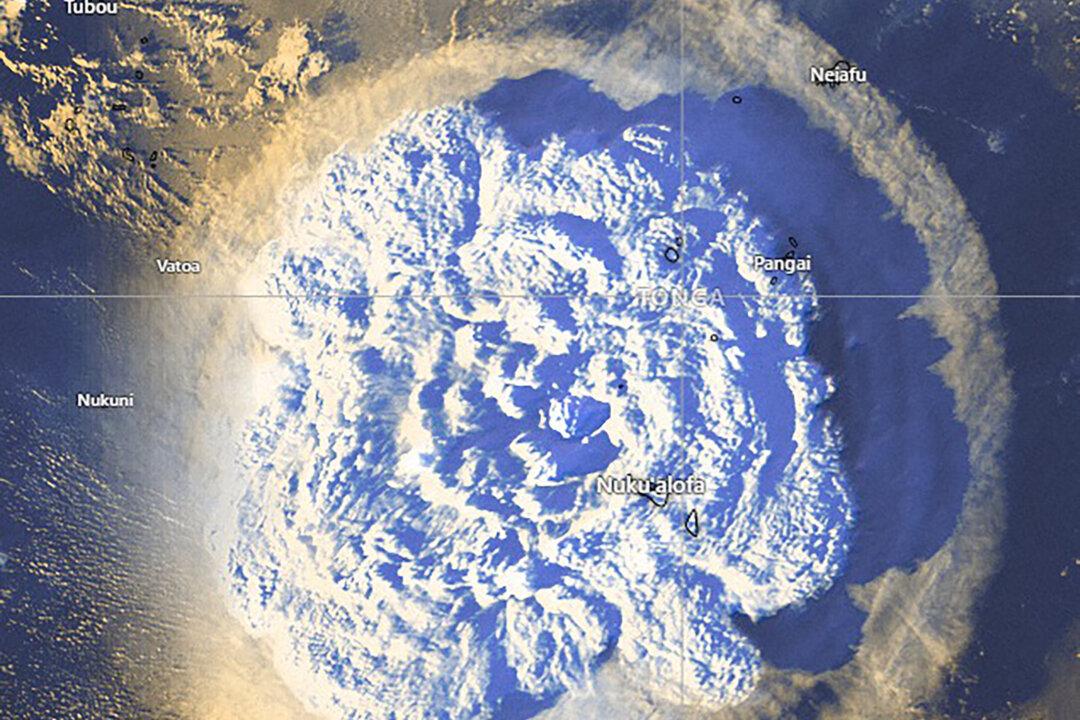The violent eruption of an underwater volcano near Tonga in January blasted a record amount of water vapor into the atmosphere, but not all scientists agree about the exact amount and its possible effects.
Tonga was hit by an underwater eruption of the Hunga Tonga-Hunga Ha’apai volcano and subsequent tsunami on Jan. 15, which wiped out an entire village on one of Tonga’s small outer islands and killed at least three people.





